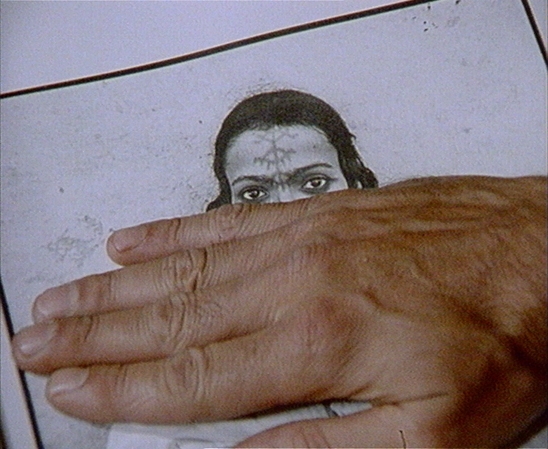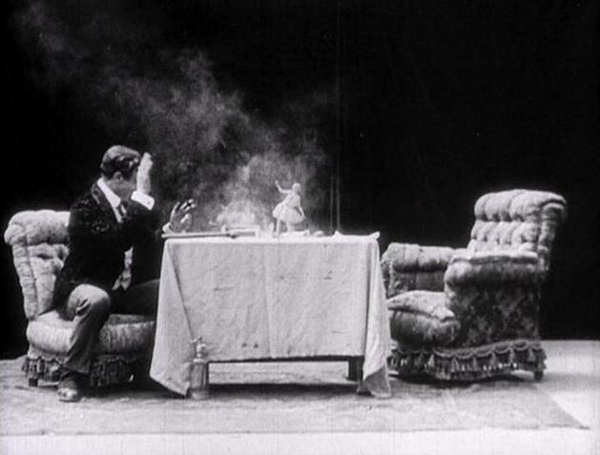Film & Special Effects: Blurring the Lines Between Reality and Imagery

In an interview in December 2009 at the Alfred Dunhill BAFTA Life in Pictures Event, when asked about the idea of what is “real” in cinema, James Cameron wagered, “It’s meaningless now…the idea of what’s real because the lines are just continuing to blur between CG and photography until it becomes meaningless…whether you capture something with a lens or you use imaginary photons in CG.”
Why believe in anything the image depicts when special features about the process of its falsification constitute just as much of its allure as the spectacular end result? When cyan-hued, doe-eared ethnographic creatures of CG start to seem more tangible to us than Syrian refugees on the six o’clock news, and Harry Potter can extend his Quidditch game into our theater seat, we might even say that our disbelief in the filmed image has become more palpable to us than the status of our own bodies.
Special effect (SFX) techniques have undergone momentous transformations throughout the past century of the medium’s history. Even SFX’ anatomical obsessions have developed (as it were): from early cinema’s in-camera techniques that never tired of limb dismemberment tricks, to the 21st Century race to shatter “the uncanny valley” and use computer imagery to simulate human likeness. Film producers like Méliès and Edison ejaculated limbs from all sides of the frame using stop-start substitution tricks (the trick splice). In The Execution of Mary (Edison, 1895) an actress’ body is swapped with a dummy’s just before her decapitation. Not long after, magicians' assistants were cut in half willy nilly and printed onto partially exposed film strips—their Dancing Legs and Odd Pairs of Limbs (both Vitagraph, 1908) then superimposed over a series of farcical locations using multiple exposure techniques.

Cecil Hepworth’s popular British automobile explosion films reveled in the anarchism of representing human bodies that defy the laws of physics and behave more irrationally than madcap industrial machines. In Explosion of a Motor Car (1900), human and auto parts alike rain down from the sky when a moving auto spontaneously combusts. Edwin S. Porter interwove limb dismemberment effects into the articulation of narrative suspense in The Great Train Robbery (1903) when a man is filmed falling from a moving train by substituting his body again with a dummy.
Even in Avatar, the Na’vi people circumvent a problem endemic to CG effects by offsetting their simulation of human likeness with a hodgepodge of fantastic and inter-species physical characteristics. “The uncanny valley” graphs the correlation between CG and Robotics techniques that approximate human likeness, and the audience discomfort that these uncanny techniques evoke. In other words, the more lifelike the image, the more uneasy it is for a spectator to identify with it.
Despite the immense upheavals in SFX techniques throughout the past century, it remains to be seen whether their historical and social implications have also undergone total transformations.
CGI guru James Cameron thinks that they have: “All cinematography is a form of artifice anyway masquerading as reality, and the CG is the same. I just think it will become more seamless as we go along, and less relevant to dissect it and deconstruct what its component parts are.” Limb dismemberment puns notwithstanding, there are serious issues raised by Cameron’s erasure of reality under the umbrella of digital artifice.

If we trace back Cameron’s line of thought, that the sharpening of special effects displaces “the real” by blurring with it, his provocative, even contentious assertion seems like scarcely more than a cliché. Special effects have always been the guardians of “the real” in motion pictures.
Since their emergence and experimental codification in the 1890s and early 1900s, motion pictures have repeatedly been characterized by their simultaneous lures of realism and technological embellishment. Somehow, the more fantastic the special effects—the trick splices, stop motion animation of live bodies, and uncanny disappearances and reappearances—the more authentic the little details in the background: the automobile passing by, or the woman in a plumed hat out for a stroll through a public space.
Ingenious and mystifying trick effects themselves often work to augment audience desires to invest in them despite their 'unbelievability.' In an era defined by the rise of secularism and declining roles of religious institutions, we sometimes feel more compelled to believe in that which cannot be explained rationally. In an early film journal, Harrison Dent described this temptation by the irrational: “P.T. Barnum declared that the people like to be humbugged, and while he may not have chosen the most appropriate word to express his meaning, it is a fact that love of the mysterious is one of the primal characteristics of human nature” (Motography, 1911, Vol. V, No. 4, p. 32).

The French loved fantasy and magic trick films: Georges Méliès launched bodies out of canons to set the stage for color-tinted moon escapades and experimented with early iterations of the close-up by blowing up his own head like a massive piece of bubble gum in India Rubber Head (1902). Gaston Velle made butterflies metamorphose into live-action female dancers, and Segundo de Chomón turned an everyday mirror into a vaudeville stage for his wife Julienne Mathieu’s filmed magic acts.
Long story short, it does not take an ethnographic spectacle about imaginary Na’vi people and the digital aesthetics they paradoxically humanize in order to blur the boundaries between “real life” and hyper-real imagery.
What have changed, however, are the politics of our impulse “to throw the baby out with the bathwater:” to let the referent not just blur with but vanish under the aegis of the sign. Indeed, the politics of our disbelief can bear crucial and potentially genocidal implications. What else must vanish along with our waning interest in distinguishing between what is “put in front of a lens” and what is fabricated using “imaginary photons?” That a real body can be captured by a reproducible image and disseminated widely for a curious public has been one of the major conceits of photochemical media since their inception.
Vitagraph filmmakers and Edison-licensees J. Stuart Blackton and Albert E. Smith got their start in motion pictures in the 1890s by filming re-enactments of contemporary Spanish-American War battles, fashioning Spanish fleets with cardboard cutouts filmed in shallow pools of water stagnating in upturned tabletops. While the medium at least partly emerged from the wartime popularity of documentary chicanery, no one at the time seemed to imagine that these images, whether real or supplanted, would displace the actual bodies in peril that they index.

For example, German experimental filmmaker Harun Farocki drives home the mortal stakes of photo-chemical realism in his 1989 documentary Images of the World and the Inscription of War. One of the film’s central motifs, aerial reconnaissance photographs of Auschwitz death camps unwittingly recorded in 1944 by allied war pilots, provides a crucial foreboding of the real bodies that will vanish historically under our ideology of the hyper-real.
While “the truth” of Auschwitz vanished behind an incomprehensible glut of photorealist information, a pile of archival evidence too monumental to signify, James Cameron’s assertions now seem to herald the utopian remainders of the referent’s recession. Each photogram frame represents a sign, a physical trace of a presence paradoxically made accessible on the basis of its absence. In Farocki’s example, the sign gets severed from the real, from lived histories of 20th Century atrocities. In contrast, for Cameron, “the real” literally vanishes into the sign itself by becoming ostensibly indistinguishable from it: “I just think it will become more seamless as we go along, and less relevant to dissect it and deconstruct what its component parts are.”
Historically, the desire to use cinema in order to make “real bodies” behave as spectacularly as trick effects exploded late into the 19-aughts with the furor of motion picture social reformist movements in the United States. In December 1908, New York City Mayor George B. McClellan shut down all of the cities Nickelodeons (converted storefront theaters), issuing an ultimatum against producers and exhibitors to “clean up their acts” or face legal extinction.
In response to public outcries for “vulgar” motion pictures’ uplift and reform, trick filmmakers began to stage their special effects like theatrical masterpieces, with mise-en-scène displacing cruder in-camera techniques. In Vitagraph’s trick opus Princess Nicotine (1909), a grotesque contrast in scale between a real-life smoker and the two tiny, impish “nicotine fairies” who pay him a visit was coordinated without the contrivances of multiple exposure. Blackton simply placed the fairies on a platform in front of the camera and then filmed them through a mirror in the background. In other words, the meticulous staging of live bodies stood in for the ready-made solutions bound up in the technology itself. Trick mirrors and the meticulous staging of live bodies made two young women metamorphose into miniaturized Lilliputians.
Industry insider Frederick Talbot mused in 1912: “At first sight one might think the two tiny forms were dolls, but their movements are so graceful, steady, and natural that this idea is quickly abandoned” (Moving Pictures, p. 243). Princess Nicotine’s “uncanny valley” of 1908 astonishingly “produced a body” in order to make the human figure itself uncannily lifelike. A contemporary animator of Winsor McCay, Emile Cohl, and R.W. Paul, Blackton shifted the paradigm by presenting “the real” as the ultimate special effect, reminding viewers that there is always a body behind the illusion, no matter how “artificially” it is devised.
Perhaps, then, the distinction between CGI and photochemical media is not as important as James Cameron (who has hundreds of millions of dollars of his own tied up in these novel devices) might have us believe. Perhaps the difference between realist ennui and spectacular disbelief has less to do with technological means than it does with genre conventions. If our unlimited capacity to archive “the real” on “auto pilot” inevitably buries the referent beneath the ruins of its colossal reconstruction, trick effects represent the reverse side of this process—of the referent’s quotidian congealment. They work to sustain the medium’s spectacular allures, to resurrect the awe and mystery of a form of vision that easily becomes more mundane than everyday ocular perception. In other words, perhaps heralding “the end of the real” is just another way of resuscitating it.
Author Bio:
Maggie Hennefeld, a contributing writer at Highbrow Magazine, hails from Brooklyn, N.Y., and currently lives in Providence, R.I., studying in a Modern Culture and Media Ph.D. Program at Brown University. Maggie has published in academic journals including Screen and Media Fields and has articles forthcoming in Discourse and Projections. She is currently working on her dissertation, titled “The Politics of Film Comedy: From Vaudeville to Terrorism.”





























































































































































































































































































































